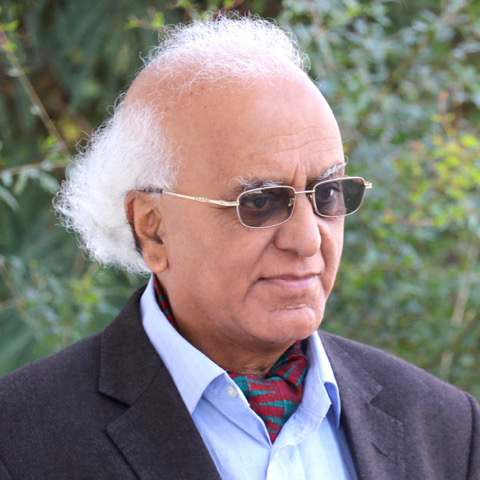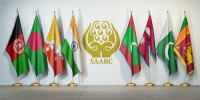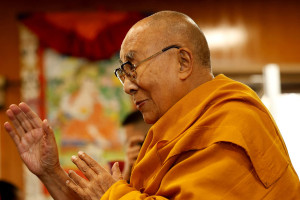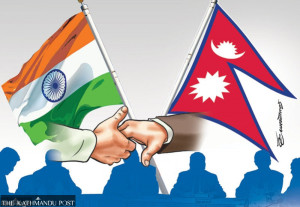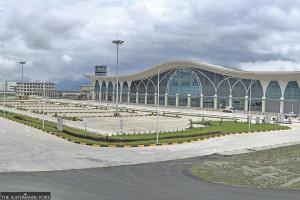Columns
Ajeet Cour’s SAARC literary dreams
She understood the male-centric structure of South Asian society and decided to fight against it.
Abhi Subedi
My perception of the South Asian Association for Regional Cooperation (SAARC) is entirely shaped by my literary, artistic and academic associations. The organisation is not political, but for writers, artists and dreamers, it has become both a metonymic and metaphorical representation of the phenomenon of identity and the continuity of institutions related to culture, creativity and the arts.
This organisation’s avowed principle was inscribed in a promise to be a trade bloc whose creation would ‘provide a platform for the people of South Asia to work together in a spirit of friendship, trust, and understanding’. But the force of culture, arts, literature and folklore that has bound the countries of this region for millennia remained secondary.
With a good chunk of the region remaining under English colonial rule until the mid-20th century and the various vicissitudes of history the countries experienced, the question of identity became a complex subject. This topic has found its space in multiple seminars of the Foundation of SAARC Writers and Literature (FOSWAL), including its 66th meeting in Delhi from November 9 to 12. I was struck by the energy pervading the widely represented seminar of writers from Bangladesh, Bhutan, India, Maldives, Nepal and Sri Lanka, with Pakistan and Afghanistan absent, in Delhi.
Among other South Asian writers, Nepali writers were also present at the meeting. They engaged in various creative activities. For instance, Bhisma Upreti presented a paper on poetry writing; Ritu Raj Subedi presented a paper on ‘cultural connectivity in South Asia’; and Laxmi Mali received the SAARC Literature Award. Anita Lama, Deenbandhu Sharma, Bishwa Ram Sigdel, Janu Dhital and Dhir Kumar Shrestha read out their creative works. Bidhan Acharya, Sneh Sayami and Abhay Shrestha were also present. Several of them are recipients of various SAARC literature awards.
A well-known Punjabi fiction writer and a respected Indian author and thinker, Ajeet Cour, 91, is the architect and president of this organisation. She opened the seminar by invoking the mantra ‘shared humanity and friendship across borders’. Both terms demand explanation. Shared humanity that invokes history, the geo-cultural sphere and borders has been the most bandied-about terminology. What unity do we expect in this context? Cour found the following answer.
I allude to this appellation cited in brochures—Cour is ‘a lifelong advocate of Track II Cultural Diplomacy’. The reason for this statement is that she has ‘built bridges between artists and writers across South Asia through literature, folklore and artistic exchange’. But that was certainly not easy for Cour. I have witnessed some important moments of her formative years; it has been nearly three decades since I saw and heard this—I recall seminars and personas. Cour put all her energy into achieving this crusade. A woman persona in South Asian society, she was looking for some ways to initiate a discourse with a penchant for action. She knew there was a cohort of male politicians where she did not have a space. She was struggling to find a space within the political conglomerate, which had its own challenges and moments of review and reflection.
A humble fiction writer, Cour’s only friend at that time was courage and determination. I would advise the FOSWAL participants to read her autobiographical books in Hindi and English, as well as her articles written during peaceful and turbulent times in Delhi and abroad, to better understand her. She was taking her persona around to fulfil a mission that sounded quite ambitious. I attended seminars where she would invite men writers as well as erstwhile and current power holders. Among the writers was Khuswant Singh, a postcolonial Indian writer, whom I saw and heard for the first time at Cour’s meeting. The others included former Indian Prime Minister VP Singh, foreign minister Jaswant Singh and others. Cour would challenge them in a bold voice, “I have conceived this idea; who is ready to father it?”
I didn’t meet the writer Mahasweta Devi, but I knew Kapila Vatsyayan very well. These women are icons of freedom and rebellion.
Cour understood the male-centric structure of South Asian society and projected her persona as a proactive agent to fight against it. She said, “What I would see today as a non-Michel Foucauldian style, I am a madwoman. I want to accomplish this.” This madness is an assertion of power, not its loss. ‘Madwoman’ almost becomes a refrain.
Witnessing her in her 91st year, still generating energy for the 66th FOSWAL meeting in Delhi, I recalled moments from my past associations with her. Out of many, I would like to put only two eloquent moments here. I visited the Lahore conference with her team in March 2004 and presented a lengthy, serious paper. The next morning, I was surprised and elated to see my words on cooperation and peace in the region published on the front page of Dawn. I alluded to Cour’s mission in that seminar paper.
Earlier, I had visited Dhaka with the FOSWAL team, where the national poet of Bangladesh, Samsur Rahaman, who had heart ailments, was given the FOSWAL literature award. The year was 2001. Cour, in her usual style, said, “We were told you could not attend the SAARC writers’ meeting in Delhi because of your weak heart. Now, please tell me, oh poet, which good poet in the world does not have a weak heart?” I saw how this amazing rhetoric pleased the poet and those who attended the ceremony.
The other member of the Cour cohort is her only daughter, Arpana Cour, a prominent Indian artist of great repute. Arpana’s Gandhara Buddha perennially stands outside the SAARC office in Thamel, Kathmandu. Upstairs from the conference venue in Delhi, Arpana has a gallery. This time, I was thrilled to see her brilliant experiments with her consummate Buddha imagery: The flowing figures with the expressionist movements of colour and brushstroke. This time, I was drawn by her use of postmodern motifs, especially in the arresting juxtaposition of the familiar imagery of quotidian life with the serene iconicity of the Buddha. I am familiar with one other secret. Arpana Cour gives money from the proceeds of the sale of her paintings to her mother to run the FOSWAL activities.
The story of Ajeet Cour and a review of her writing would require a longer space. I end this short review of the ‘madwoman’s’ oeuvre, who has kept the creative heritage of the South Asian countries alive. This carries a deep message.




 9.12°C Kathmandu
9.12°C Kathmandu